The health benefits of amino acids
There are twenty amino acids (AA) that have been found to occur in all proteins and for which genetic codon exits. Each of these has one or more genetic codons which are present within the molecule of specific messenger RNA which themselves are produced under the direction of a gene occurring in DNA molecules. DNA is a sequence of four nucleotides namely, adenine, guanine, cytosine, and thymine. Their exact sequence determines the genetic codon. Each set of three nucleotides in the DNA codes for one amino acid is attached. These are arranged in 64 different combinations, more than enough to code 20 amino acids. Out of 64 codons, there are three codons UAA, UAG, and UGA which do not code for any amino acid and hence are known as stop codons. Every gene starts with the initiation codon AUG which encodes the AA methionine. In this way, amino acids are playing an essential role within DNA molecules and are also helpful in their synthesis by manufacturing purines and pyrimidines e.g. alanine, serine, aspartic acid, etc.
Amino acids needed by the human body
Amino acids needed by the human body are essential elements of our diet. These are proteins that are one of the basic nutrients needed to maintain the body’s health. About three-quarters of the body’s solids are proteins. These include structural protein, enzyme nucleoproteins, proteins that transport oxygen, proteins of muscles that cause muscle contraction, and many other types that perform specific intracellular and extracellular functions throughout the body. The amino acids needed by our body are essential amino acids and they must be provided by the food they include histidine, leucine, isoleucine, lysine, methionine, phenylalanine, threonine, tryptophan, and valine.
Physiological functions of some of the individual amino acids in our body both essential and non-essential:
Histidine amino acid
- Is required in our body since it is the important precursor of histamine.
Valine, leucine and Isoleucine amino acids
- These result in the formation of elements necessary for the citric acid cycle.
- The error in the metabolism of these gives rise to Maple syrup Urine diseases.
Methionine amino acid
- It is converted into S-adenosylmethionine which acts as a methyl donor and results in the formation of adrenaline.
Phenylalanine and Tyrosine amino acids
- Are used to make the neurotransmitters norepinephrine and epinephrine, which relay nervous system messages throughout the body.
- They can also be used to make melanin pigment which is responsible for hair, eyes, and skin color.
- They also make thyroxin, which helps to regulate the metabolic rate.
Glycine amino acid
- It is the part of the molecule of glutathione which is a coenzyme in many biochemical reactions and helps in the maintenance of cell integrity by protecting hemoglobin, catalase, and lipoproteins of the cell membrane.
- It takes part in the synthesis of heme, purines, and creatine.
- It performs detoxicating reaction by conjugating with benzoic acid in the liver to form hippuric acid which is then excreted in the urine.
- It has a very important neurotransmitter role of inhibitory nature in the central nervous system.
Alanine amino acid
- It is used in the synthesis of cysteine, choline, and cephaeline.
- It takes part in the synthesis of purines and pyrimidines.
- It gives rise to glycine and pyruvic acid.
Glutamic acid
- It gives rise to glutathione, glutamine, GABA and alpha-ketoglutaric acid, etc. All these have a wide range of functions in our bodies.
Glutamine amino acid
- It is converted to glutamic acid.
- Its formation in the brain prevents the accumulation of ammonia, which is very toxic to nervous tissue.
Tryptophan amino acid
- It contains the indole ring and helps in the formation of niacin, a member of the Vitamin B complex.
- It forms serotonin which has potent action on the brain and other parts of the body.
Aspartic acid
- It forms oxaloacetic acid.
- It acts as an excitatory transmitter.
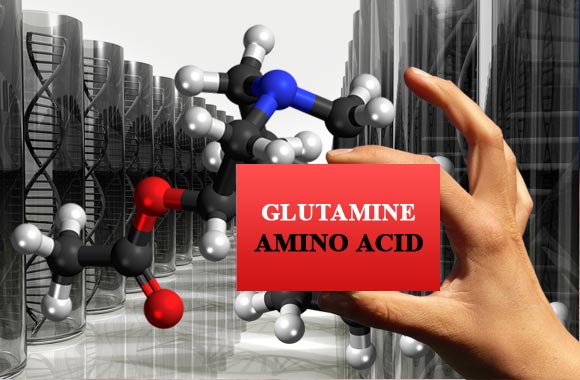
Glutamine Amino Acid Benefits
Glutamine is an amino acid with uncharged polar side chains. The polarity is due to the presence of functional groups in their structure that forms the hydrogen bond with the water. The functional groups in the glutamine are the amide groups. Glutamine amino acid is non-essential as it is synthesized in our body from other amino acids, mainly glutamic acid. CAA and CAG are two of their codons. Glutamine has been found in an abundant amount of our blood.
Sources
Although it need not be given via food as it is manufactured in our body itself but it is richly present in many foods. Some of its sources include
Animal sources: It is found in large amounts in meat, fish, eggs, chicken, and dairy products like milk, cheese, etc.
Plant sources: In plants, it is found in many vegetables like spinach, cabbage, and raw parsley. It is also present in beans, wheat, etc.
Biosynthesis
This amino acid glutamine, which contains an amide linkage with the ammonia at the gamma-carboxyl, is formed from the glutamine amino acid catalyzed by an enzyme called glutamine synthetase. This reaction is driven by the hydrolysis of ATP. In addition to producing glutamine amino acids for protein synthesis, this reaction also serves as a major mechanism for the detoxification of ammonia, especially in the brain and liver.
Physiological Functions
Glutamine can also give rise to another amino acid from which it has arisen itself i.e. glutamic acid. It reacts with water and gives rise to glutamic acid along with the generation of ammonia. This ammonia is then used for the neutralization of the hydrogen ions in renal tubules. This is its important function as this amino acid regulates the acid-base balance in the kidney.
Glutamic acid crosses the blood-brain barrier and is found useful for the brain. It is said to be the brain fuel.
It is important for our muscles as well as it synthesizes muscles proteins and prevents the muscles from wasting. It is found useful in treating the wasting of muscles due to some diseases.
Glutamine is glucogenic and gives rise to glucose which serves as a source of energy in our body.
It also donates carbon atoms which is important for the citric acid cycle.
It is important for the intestinal lining where it is located and provides nutrients there. This leads to a normal function of the intestinal villi.
Glutamine has been found to use up by the white blood cells of our body; therefore it also performs an important function for our immune system.
It also plays role in gats metabolism in the body.
It also produces glutathione in the liver. Glutathione is essential for the detoxification of harmful free radicals.
It has also been found to regulate our blood glucose levels. Normal blood glucose level is important for our brain since our brain utilizes glucose.
These are some of its functions. These days it is also available in supplement forms. This helps treat many chronic diseases. They also improve the functions of our brains.
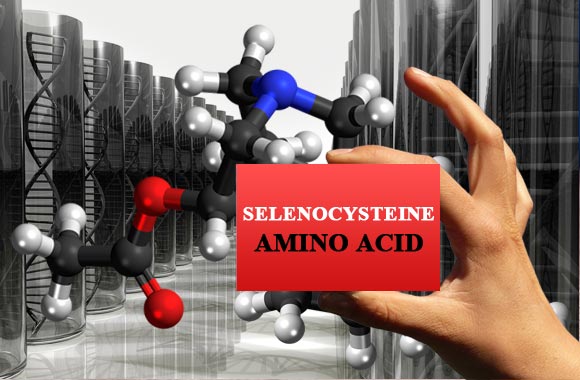
Glutamic Amino Acid Benefits
Glutamic acid is an amino acid with an acidic side chain and a negative charge at neutral pH. It is a nonessential amino acid as it is synthesized in the body. It gives rise to intermediates of the citric acid cycle so it is glucogenic. It has codons GAG and GAA. Its salt sand carboxylate anion is called glutamates.
Sources
Glutamic acid is richly present in our normal diet. Some of its sources are.
Animal source: poultry, meat, fish, egg, Kombu, and dairy products.
Plant sources: Glutamic acid is present in wheat with a ratio of thirty-five percent of the protein.
Biosynthesis
It is synthesized in the cytosol of hepatocytes by another amino acid glutarate by the transfer of an amino group to the alpha-keto acid. Glutamic acid is manufactured by the reverse of oxidative deamination which is catalyzed by an enzyme glutamate dehydrogenase.
Functions
This amino acid gives rise to many compounds essential for our body. These are:
Glutathione: It is a tripeptide that not only contains glutamic aid but also has one molecule each of cysteine and glycine. Glutathione performs multiple functions in our body. It acts as an antioxidant and detoxifies many harmful substances in our bodies. It plays role in the immune system. It also takes part in the synthesis and repair of DNA and synthesis of protein, prostaglandin, etc
Glutamine: The glutamine amino acid provides ammonia in the distal convoluted tubules of the kidney.
Alpha-ketoglutaric Acid: It shows the alpha ketoacid of glutamic acid and it enters the citric acid cycle.
Gamma-Aminobutyric acid (GABA): Glutamic acid gives rise to the most important neurotransmitter GABA by the reaction which is catalyzed by glutamate decarboxylase. This neurotransmitter provides postsynaptic inhibition in the central nervous system.
Ammonium Ion: Glutamic acid enters the mitochondria and here it gives up its amino form and forms an ammonium ion which is then used for urea synthesis.
Glutamic acid itself also acts as an excitatory neurotransmitter in the brain which results in the increased firing of the neuron.
Glutamic acid has also been used in treating a variety of diseases such as epilepsy, ulcer, mental retardation, hypoglycemic coma, muscular dystrophies, etc.
It has also been found beneficial in the metabolism of carbohydrates and fats. It is also helpful in the transport of potassium into the spinal fluid and across the blood-brain barrier, but it does not itself pass the blood-brain barrier.
Our brain also uses glutamic acid as fuel since it is found in high levels in the blood.
It is also seen that treatment with glutamic acid has improved personality disorders and is also beneficial in treating that behavior which is originated from childhood.
These days glutamate has been used as a food additive and flavor enhancer. It is also included in certain drugs and is available in the market as dietary supplements. It is also used to enhance plant growth and also has been found useful in controlling dipolar interactions.
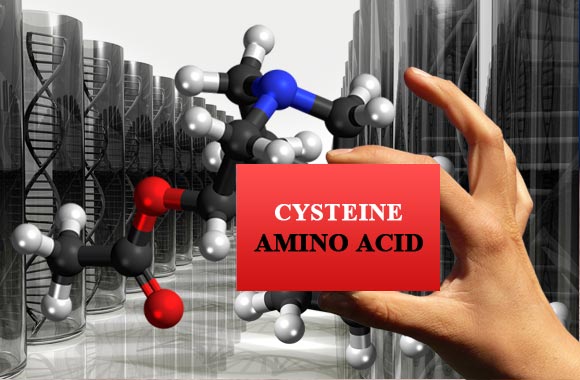
Cysteine Amino Acid Benefits
Cysteine is an uncharged amino acid with a polar side chain and is hydrophobic. It is a sulfur-containing amino acid and the S atom in cysteine is its functional group. It is also glucogenic, and it produces glucose. It is one of the non-essential amino acids which are synthesized in the body.
Sources
Cysteine is present in high protein food which includes:
Foods of animal origin: These are chicken, meat, turkey, eggs, meat, yogurt, cottage cheese, whey proteins, etc
Foods of plant origin: These include onion, garlic, red pepper, sprouts, wheat, granola, lentil, etc.
It is needed for all ages, especially in people with certain metabolic diseases or malabsorption syndromes.
Biosynthesis
Cysteine is synthesized from methionine which is also an amino acid. S-adenosyl homocysteine produced from methionine is converted into adenosine and homocysteine on hydrolysis. Homocysteine condenses with serine and forms cystathionine in the presence of the enzyme cystathionine beta-synthase. Cysthatione then reacts with water and gives rise to cysteine along with alpha-keto butyric acid and ammonia.
Functions
Cysteine is needed for the skin and it performs detoxification action in the body as it is present in keratin which is the main protein found in the nails, hairs, and skin.
It is essential for collagen synthesis as well as provides texture and elasticity to the skin.
It also forms another amino acid the taurine.
It acts as a precursor to glutathione which is an antioxidant. It, therefore, detoxifies the body from the free radicals produced in the body which damage the cell membrane and DNA. The presence of these free radicals also results in several diseases like heart disease or even cancers. So there needs to be eliminated which is done by cysteine.
It also has a role in the metabolism of certain chemicals found in the body, for example, heparin, biotin, coenzyme A, glutathione, lipoic acids, etc.
It also helps in making the protective lining of the stomach and intestine strong which further is beneficial as it then prevents damage by certain drugs like aspirin etc
These days cysteine supplements are available in the market in the form of N-acetylcysteine NAC. The benefits of its use are that it detoxifies harmful substances in the body and performs liver-protecting actions. It also has been used in cough drugs where it functions to break the disulfide bone and thins the thick mucus and make it easy for a person to cough up. It has been an essential antidote for paracetamol poisoning. The recommended dose of these supplements is about 200mg.
Diseases Due to Error in Metabolism
A large number of inborn errors of metabolism have been found in cysteine S-containing amino acids. These are homocystinuria, cystathioninuria, cystinosis (Cystinosis is a cysteine storage disease), and cystinuria.
Homocystinuria is due to deficiency of enzyme cystathionine beta-synthase and patients with this disease exhibit displacement of the lens, abnormalities in the skeleton, premature arterial diseases, osteoporosis, and mental retardation.
In cystinuria large amount of cysteine is excreted in the urine along with lysine, arginine, and ornithine.
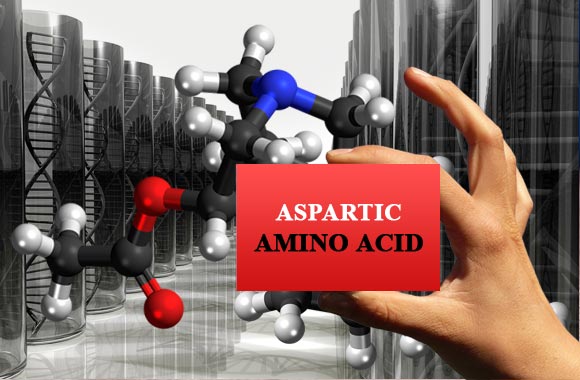
Aspartic Amino Acid Benefits
Aspartic acid is an amino acid with an acidic side chain. Aspartic acid is negatively charged at neutral ph. This is a non-essential amino acid and is produced in the human body. Aspartic acid is glucogenic as well as ketogenic. It has two stereoisomer forms namely D-aspartic acid and L-aspartic acid.
The L-aspartic acid is 20 proteinogenic amino acids which means it is a building block of protein.
Sources
Being formed in the body it is not so needed but still, it is also found in many foods, as follows
Animal source: Aspartic acid is present in different types of meat like luncheon or sausage meat.
Plant sources: Aspartic acid is found in sugar cane, avocado, oat flakes, molasses, sprouting seeds, etc.
Supplements of aspartic acid are also selling in the market in the form of magnesium aspartate and sweeteners.
Biosynthesis
Aspartic acid is produced from oxaloacetic acid by the process of transamination. Ornithine and citrulline a part of the urea cycle also produced aspartic acid.
Physiological Functions
Aspartic acid takes part in the formation of purines and pyrimidines which are essential for DNA synthesis.
With the help of citrulline, it forms argininosuccinic acid which is utilized in the urea cycle.
It also forms oxaloacetic acid through the process of transamination. The oxaloacetic acid then enters the citric acid cycle for oxidation or gives rise to glucose by the process of gluconeogenesis.
Aspartic acid can be converted into amide form i.e. asparagines which releases ammonia in cells of distal convoluted tubules of the kidney.
One of the most important roles of aspartic acid is that it acts as a neurotransmitter of the excitatory type in the central nervous system. It also helps in central nervous system development.
It has also been found to play an important role in the neuroendocrine system for example in the anterior pituitary it stimulates the following hormonal secretions of prolactin, growth hormone, and luteinizing hormone.
This amino acid also has an important part in dentin development, which is a tissue that is an essential component of teeth.
It also produces various other amino acids like arginine, threonine, lysine, methionine, isoleucine, and lots of other nucleotides.
It also aids in the detoxification of the liver from various drugs and chemicals.
As it provides energy to the body to provide resistance to fatigue also.
Diseases Due to Deficiency
The deficiency of aspartic acid results in poor cellular energy. So there will be the fatigue of chronic type and stamina will be reduced then. This amino acid also results in the removal of ammonia. When its deficiency occurs, there is an increase in the amount of ammonia which will lead to brain damage and liver damage.
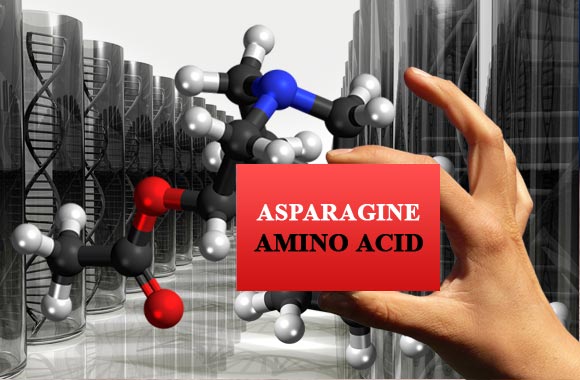
Asparagine Amino Acid Benefits
Asparagine amino acid is a non-essential amino acid as it is being produced in our body from other amino acids. It is one of the natural amino acids. It has codons AAU and AAC. Its side-chain functional group is carboxamide. It was first obtained from asparagus in 1932. Aspargine contains an amide linkage with ammonia at the beta-carboxyl end. It is one of the glucogenic amino acids. It is an uncharged amino acid along with a polar side chain.
Sources
Although not essential still asparagine is found in many different foods. Its sources are as follows:
Animal sources: Some of its animal sources are meat, beef, chicken, poultry, eggs, etc.
Plant sources: Asparagine plant sources are potatoes so eating French fries will give you asparagine along with starch. It is also found in roasted coffee. Other sources are asparagus, nuts, legumes, seed, whole grains, soy, etc.
Asparagine is present in plants’ proteins in large amounts.
Biosynthesis
This amino acid in our body is formed from aspartate by asparagines synthetase by using glutamine as the amide donor. This reaction requires ATP and like the synthesis of glutamine has equilibrium far in the direction of asparagine synthesis.
Physiological Functions
Asparagine gives rise to aspartic acid by the reversal reaction and also gives rise to ammonia. This reaction is catalyzed by asparaginase. Aspartic acid can then be converted into oxaloacetic acid which enters the citric acid cycle then. Ammonia formed then gives rise to urea.
Our central nervous system also requires this amino acid which helps in the maintenance of balance or equilibrium. It is also essential for the proper functioning and health of our nerves and other cells of the body. It controls their metabolism in the brain.
There is a link between asparagine the aspartic acid. If there is a deficiency of asparagines, it will lead to low levels of aspartic acid as it is involved with aspartate synthesis. Due to less synthesis of aspartic acid urea cannot be synthesized and excreted. This may lead to the accumulation of nitrogen-containing harmful metabolites in the blood which directly affect our brain and lead to confusion, headache, irritability or depression, etc. So this amino acid should be present at a normal level within our body.
Though asparagine supplements are available in the market there are no such suggestive indications to use them. People who take a proper diet never feel the need for these supplements. So one should eat healthy foods full of nutrients to maintain one’s life healthily and wealth.
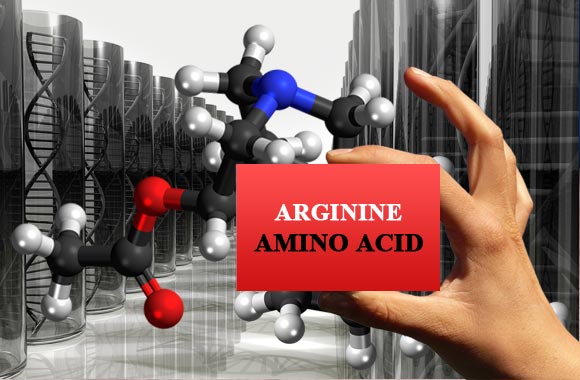
Arginine Amino Acid Benefits
Arginine is an amino acid with a basic side chain and positive charge. It is one of the non-essential amino acids, therefore, it is produced in our body with the help of other amino acids. In premature infants, it is an essential amino acid as they cannot synthesize it. It is a glucogenic amino acid and it gives rise to intermediates of the citric acid cycle by the gluconeogenesis process. Its L-form is the common naturally occurring amino acid.
Sources
It is present in a wide variety of foods. Animal and plant sources are the following:
Animal source: turkey, chicken, meat, milk, cottage, yogurt, cheese, pork, beef, and a variety of seafood.
Plant source: granola, wheat, peanuts, pumpkin seeds, sesame seed, cashews, almonds, walnut, flour, popcorn, brown rice, etc.
It is found in chocolate as well. In our body, it is present abundantly in histones and protamines.
Biosynthesis
It is manufactured from citrulline and the reaction is catalyzed by two cytosolic enzymes namely, arginosuccinate synthetase and arginosuccinate lyase.
Functions
It forms the following important products:
Ornithine: Arginine takes part in the urea cycle and results in the formation of urea and ornithine during hydrolysis. Ornithine not only plays role in the urea cycle but also has a role in the formation of polyamine.
Creatine: Arginine also contributes to the formation of creatine which is very important for the muscles as it increases muscle mass and strength.
Glutamic acid: This amino acid being glucogenic results in the formation of creatine.
Nitric Oxide: Arginine also gives rise to nitric oxide along with citrulline in the presence of the enzyme nitric oxide synthase. This nitric oxide plays a very important physiological role. It causes relaxation of the smooth muscles of blood vessels and therefore causes vasodilation. Nitric oxide also inhibits platelet aggregation.
- It is essential for the good health of the skin, liver, muscles, and liver.
- It also causes stimulation of our immune system and increases the amount of T lymphocytes which are necessary to combat different types of injuries infections and traumas.
- It has an important function in cell division and the healing of a wound.
- It removes ammonia from the body by allowing the liver to detoxify it and releases hormones. For example, it stimulates the release of insulin from the pancreas.
- Arginine is also used in toothpaste and provided relief from tooth hypersensitivity.
- In the form of supplements, it has been used to improve sexual functions, especially erectile dysfunctions, and also to regulate blood pressure.
- It is also helpful in lowering cholesterol in the body.
- Arginine also plays a role in the metabolism of muscles and it also maintains the nitrogen balance and helps in weight control as it decreases the fat content in the body.
- Arginine is produced abundantly in case of any trauma, injury, or surgery.
- Its salts called malate salt have found use in the treatment of alcoholic hepatitis as well as an advanced stage of cirrhosis of the liver.
- It also causes the stimulation of growth hormones.
- Arginine supplements have also been found beneficial for female fertility and the reproductive system.
In a nutshell, arginine is an important amino acid in our body. One important thing is that arginine supplements though have various positive effects but they should be avoided in case the patient is suffering from schizophrenia or kidney diseases. They are also not recommended for long-term use as they can cause thickening and coarsening of the skin in the long run.

Alanine Amino Acid Benefits
Alanine is the amino acid with non-polar aliphatic side chains being its methyl group non-reactive and is hydrophobic i.e. water repellent. It is a non-essential amino acid. It is synthesized in the body. It was first obtained in 1879. It is glucogenic amino acid means it can give rise to glucose through the alanine cycle. It has a simple molecular structure. It has two stereoisomers, namely DL-alanine and D-alanine.
Sources
Being non-essential it needs not to be obtained from the food. But it is present in a variety of foods.
Animal sources: Its animal sources are meat, eggs, fish, gelatin, milk, dairy products, etc.
Plant sources: The plant sources include rice, nuts, legumes, corn, seed, whole grains, soy, bran, etc. Alanine is also found to occur in the bacterial cell wall as well as in peptide antibiotics.
Synthesis
As we know alanine is manufactured in our body so it is made by different types of amino acids themselves. These include pyruvate, leucine, valine, isoleucine, alpha-ketoglutarate, and oxaloacetic acid. The reaction involved is transamination. In a transamination reaction, the transfer of one amino acid to another amino acid occurs which results in the formation of new amino acid.
The glutamic acid reacts with pyruvic acid under the presence of glutamine pyruvate transaminases (GPT) which are now called alanine aminotransferases (ALT) and give rise to alanine and alpha-ketoglutarate. Alanine is produced in the muscle by this reaction. It is then carried to the liver by the blood where it gives rise to glutamic acid and pyruvic acid in a reversible reaction.
It is also formed along with lactate.
When the condensation of acetaldehyde occurs with the ammonium chloride racemic alanine is produced.
Functions
Alanine gives rise to glutamate and pyruvate which have some important roles in our body.
Pyruvic acid forms glucose. The glucose so formed can go back to the muscles and thus complete the cycle of what has been called the alanine-glucose cycle. Glucose is essential for energy.
Glutamic acid provides ammonia which is then utilized in the synthesis of urea in the liver.
Alanine is also needed for the metabolism of glucose and tryptophan and vitamin B6 (pyridoxine).
Nowadays its supplements are available in the market under the name of beta-alanine. These have many advantages as they increase muscular strength and power. If someone is lean, their uses increase their muscle mass. Boost the anaerobic endurance in a person and make the person strong and improves in him the ability to exercise well without getting fatigued early.
The alanine aminotransferase enzyme also has much importance. It is used as a test to measure the damage taking place in the liver as this enzyme is present in the liver. It is used to check cirrhosis, and any viral liver disease like hepatitis, jaundice, etc.
There are theories that there is a link between the high alanine level and high blood pressure. In rats, it has also been shown to reduce cholesterol.
When deamination of alanine occurs, it results in the production of alkyl free radical which has led to its use in radiotherapy.
So we have seen alanine is not only needed by our body but has other benefits as well.

Valine Amino Acid Benefits
Valine is an essential amino acid with an aliphatic side chain. It is non-polar. It has GUC, GUU, GUA, and GUG codons. It was isolated from the casein in 1901 by German chemist Emil Fischer. It is a hydrophobic amino acid found in proteins. Its shape and volume roughly resemble the threonine amino acid and the only difference is the replacement of the hydroxyl group with a methyl group in the valine. It also has a branched chain.
Sources
Valine must be provided for the food. Some of its sources are as follow.
Animal origin: Valine sources from animal origin include meat, poultry, fish, dairy foods like cheese, etc
Plant origin: Valine plant sources include lentils, peanuts, soy, mushrooms, and sesame seeds.
Biosynthesis
It is normally obtained from the hydrolysis of proteins. Valine is also manufactured in plants from pyruvate. Several enzymes take part in this process. These include acetohydroxy acid isomeroreductase, acetolactate synthase, valine aminotransferase, and dihydroxy acid dehydratase.
The racemic valine is manufactured by bromination of isovaleric acid and then amination of Bromo derivatives.
Functions
This branched-chain amino acid undergoes a transamination reaction and results in the formation of alpha-keto acid and this reaction is catalyzed by a branched-chain transaminase. The alpha-keto acid then gives rise to acyl CoA derivatives with the help of enzymes. Acyl-CoA derivatives then form succinyl CoA which enters into the citric acid cycle.
Valine has some stimulating effects. It plays role in muscle metabolism and also helps in the growth and repair of tissues. Valine also maintains a nitrogen balance in our bodies. Valine is the glucogenic amino acid so it provides glucose.
A disease known as maple serum urine disease results in case of an error in the metabolism of valine and it is then excreted in the urine.
If someone has taken a large amount of valine, then its toxicity occurs and is characterized by crawling sensations on the skin and feelings of hallucinations. So it should be taken with care in patients suffering from any liver or kidney diseases.

Tyrosine Amino Acid Benefits
Tyrosine is an amino acid with an aromatic side chain. It has a hydroxyl group for H bonds and shows polarity. It is a non-essential amino acid which means it is synthesized in the body. It is glucogenic and ketogenic.
Sources
In foods, it is mainly found in those foods containing high protein content.
Animal sources include chicken, turkey, and dairy products like yogurt, milk, cheese, and fish.
The plant sources are almonds, peanuts, the seed of pumpkin, lime beans, sesame seeds, etc.
Body tyrosine is mainly of dietary origin.
Synthesis
In our body tyrosine is produced from phenylalanine which is itself an amino acid. The reaction occurs in the presence of phenylalanine hydroxylase enzyme which is a mixed-function oxidase that needs tetrahydrobiopterin as a cofactor. This provides two hydrogens for the reaction and is then oxidized to dihydrobiopterine. The reaction also utilizes oxygen. Water is produced and the remaining ½ oxygen results in the hydroxylation of phenylalanine at its para-position forming a p-hydroxyphenylalanine which is also called tyrosine. The reaction also needs NADH+H+.
Functions
Tyrosine is known for giving lots of important products to our bodies. It gives rise to catecholamine e.g. adrenaline and noradrenalin and dopamine. They then function as neurotransmitters in our brains. These are important in maintaining a good balance of moods in person. If a deficiency occurs then this results in depression a person. Dopamine further has another important physiological role in our body i.e. it stimulates the myocardial activity in the heart means it performs an isotropic action. Since it is a neurotransmitter in the brain, in case of its deficiency in the basal ganglia, the extrapyramidal disease called Parkinsonism occurs. It also acts as a prolactin release inhibiting factor in the anterior pituitary gland.
Tyrosine also helps in the production of triiodothyronine and tetraiodothyronine which are important thyroid gland hormones.
Tyrosine also takes part in melanin production. Melanin is the chief pigment of the skin and is also present in the eye, hair, and even brain in the substantia nigra.
Tyrosine also plays a role in enzyme receptors. Insulin receptor has been deemed to be a protein kinase that is tyrosine-specific. The hydroxyl group of tyrosine receives a phosphoryl group from ATP when insulin molecules become bound with the portion of the receptor outside the cell.
Catabolism
The catabolism results in catabolic products of tyrosine which include homogentisic acid which is further broken down to fumaric acid and acetoacetic acid.
Diseases
The defects in tyrosine metabolism lead to albinism which is a group of diseases as a result of a melanin deficiency. These result in either partial or full absence of pigments from the skin, eye, and hair. There may be vision defects and photophobia. This disease occurs due to a deficiency of the tyrosinase enzyme.
Alkaptonuria is another disease due to a deficiency of homogentisic acid oxidase that results in the accumulation of homogentisic acid. A patient may have homogenetic aciduria, arthritis of large joints, and black pigmentation of cartilage and collagenous tissues.
Tyrosine interacts with monoamine oxidase inhibitors so a patient should avoid foods containing tyrosine.
Thus, tyrosine has many beneficial effects. Its supplementation is also available for persons deficient in this amino acid. It is a useful amino acid during periods of cold, stress of any kind either emotional or physical, and fatigue.
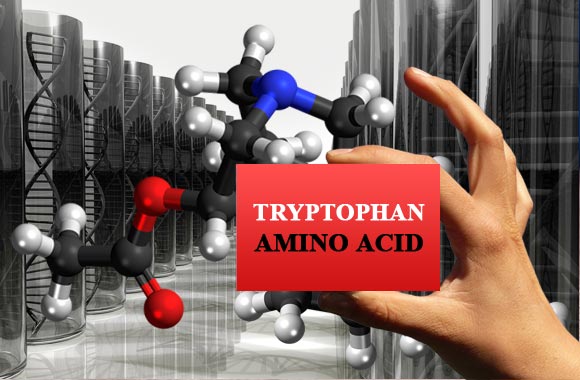
Tryptophan Amino Acid Benefits
Tryptophan amino acid is the essential amino acid. This means it must be provided through food to the body. It is one of the amino acids that in its molecule contains an indole ring. Tryptophan is glucogenic as well as a ketogenic amino acid. It has codon UGG. It has two stereoisomers, namely L-tryptophan and D-tryptophan.
L-tryptophan can only be utilized in the structure of enzyme proteins while D – tryptophan is normally present in naturally occurring peptides. Tryptophan has an aromatic side chain and is relatively polar. The N of the imidazole ring present in tryptophan gives polarity to this amino acid. It is genetically coded also.
Sources
Tryptophan is found in foods of animal origin as well as foods of plant origin in an abundant amount. Some of the foods in which it is present are as follows:
Animal Origin: Chicken, turkey, fish, egg, milk, cheese, beef, etc.
Plant origin: Nuts, peanuts, peanut butter, pumpkin seed, soy, sunflower seed, tofu, rice, banana, potato, wheat flour, etc.
Synthesis
It has also been produced by plants and microorganisms with the help of anthranilate and shikimic acid. It is then condensed by phosphoribosyl pyrophosphate which generates pyrophosphate as a by-product. When the ring-opening of ribose moiety occurs which then follows reductive decarboxylase, there is a formation of indole-3-glycerine-phosphate results which transforms into indole. Thus, the last formation of tryptophan results from the indole and serine amino acid, and the reaction is catalyzed by an enzyme tryptophan synthase.
Role
In our body, 60mg of tryptophan gives rise to 1 mg of niacin which is a member of the vitamin B complex and is essential for the metabolism of carbohydrates, proteins, and fats as well as for normal functioning of the skin, intestine, and nervous system.
The body should contain iron, vitamin B 12, and riboflavin in order to convert tryptophan into niacin.
One of the most important functions of tryptophan in our body is that it gives rise to serotonin and its derivatives.
It first is hydroxylated and gives rise to 5-hydroxytryptophan. This compound then undergoes a decarboxylation reaction to form serotonin.
5-Hyroxyindole acetic acid is the major derivative that is excreted in the urine in conjugated form.
Serotonin is a powerful vasoconstrictor as well as it stimulates smooth muscle contraction.
Serotonin also exerts a potent action on the metabolism of the brain and it also acts as a neurotransmitter in many areas of the brain. It is then involved in various functions such as mood, sleep, thermoregulation, depression, appetite, and anxiety. An excess of serotonin in the brain leads to stimulation of cerebral activity whereas its deficiency produces depressant effects.
Tryptophan in our gastrointestinal tract is acted upon by the bacteria which produces a large number of substances for example indole, indolepyruvix acid, and indoleacetic acid. These are excreted in the urine or feces.
Catabolism
Tryptophan catabolism gives rise to the following products after complicated pathways.
- Fromylkynurenine
- Kynurenine
- 3-hydroxykynurenine.
Nowadays tryptophan is available in a variety of supplement forms. It has been found good in sleep arousal along with the treatment for many disorders such as seasonal affective disorder, premenstrual disorder, etc.

Threonine Amino Acid Benefits
Threonine is the uncharged polar amino acid. It is an essential amino acid as it is not manufactured in our body. It must be provided through food to our bodies. It has two chiral centers. It has four stereoisomers. Threonine is a hydrophilic molecule and has a hydroxyl group. It is glucogenic as well as ketogenic.
Sources
It is present in protein-rich foods. Some of its sources are as follow.
Animal Sources: Threonine is present in high amounts in meat, eggs, dairy products, cottage cheese, and fish.
Plant sources: Threonine is also present in many leafy vegetables, lentils, wheat, beans, mushrooms, grains, sesame seeds, and nuts.
In the body, it is found in large amounts in the skeletal muscles, heart, and central nervous system.
Synthesis
Threonine is not synthesized in our body but is formed in many plants and microorganisms with the help of various enzymes from the other amino acid aspartate. These are aspartokinase, homoserine dehydrogenase, threonine synthases, homoserine kinase, and aspartate semialdehyde dehydrogenase.
Physiological Functions
Threonine gives rise to pyruvic acid which can form either glucose or acetyl CoA. The latter may either enter the citric acid cycle or may form the acetoacetyl CoA which is a precursor of ketone bodies.
Threonine also forms glycine which itself is an important amino acid as it acts as an inhibitory neurotransmitter.
Threonine also gives rise to propionyl-CoA which can then form succinyl CoA, an important component of the citric acid cycle.
It has also an important role in maintaining the normal functioning of our various systems like the central nervous system, cardiovascular system, liver, and immune system.
It helps in the synthesis of collagen and elastin present in the skin. It maintains the normal protein balance in the body. It makes our muscles strong. It also plays role in making our teeth strong and also promotes early healing of wounds.
Threonine has also been found to aid antibody production which is a major component of our immune system. These antibodies combat various infections, microbes, and foreign bodies.
Threonine also prevents fat accumulation in the liver as it enhances fats and fatty acid digestion thus helping the lipotropic function of the liver.
Threonine supplements have seemed to be useful in treating various diseases due to a lesion on the central nervous system like amyotrophic lateral sclerosis disease as threonine produces glycine. Multiple cases of sclerosis symptoms have also been alleviated by the use of this amino acid. The dose of threonine may not be taken in excess amount as it may damage the liver and kidney functions.
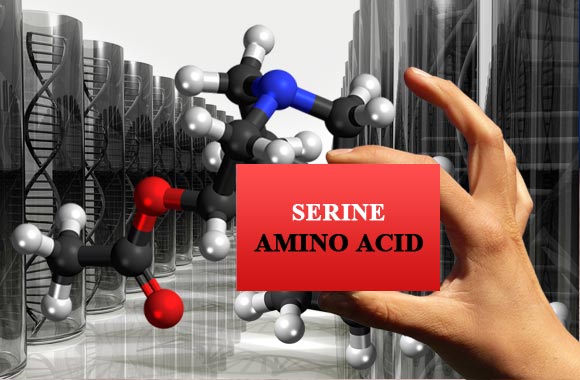
Serine Amino Acid Benefits
Serine is the amino acid with an uncharged polar side chain. It was isolated first from the silk protein named sericin in 1865. It is a non-essential amino acid since it is synthesized in our bodies. It has six codons which are AGU, AGC, UCC, UCU, UGC, and UCA. It is a hydrophilic amino acid because of its hydrogen bonding capacity. It has an L-isomer form which is the only form of serine that takes part in protein synthesis.
Sources of Serine: Some of its sources are as follow.
Animal origin sources: These include meat, beef, dairy products like cheese, etc.
Plant origin sources: These include peanuts, wheat, gluten, and soy products.
Biosynthesis
In our body serine is formed from glycine amino acid. Glycine is converted into serine by the addition of the hydroxymethyl group and this reaction is catalyzed by serine hydroxymethyltransferase enzymes which also require the two coenzymes namely, tetrahydrofolate, and pyridoxal phosphate.
Physiological Functions
Serine is used in the synthesis of cysteine, cephalins, and choline.
It is utilized in the synthesis of purines and pyrimidines which further produce DNA and RNA.
Serine can also give rise to pyruvate and glycine.
Glycine is formed by the reversal of serine hydroxymethyltransferase reactions.
Pyruvate is produced when serine reacts with water in the presence of the serine dehydratase enzyme.
Serine has also been found the precursor of sphingolipids and folate. These two act as a donor of one carbon atom in biosynthesis.
It takes part in muscle formation as well as in the maintenance of a normal immune system.
Serine is also utilized in the synthesis of tryptophan amino acid which then gives rise to the important neurotransmitter serotonin in the central nervous system. Their deficiency leads to depression, irritability, insomnia, anxiety, and confusion.
Serine has also been found in the component of brain proteins and nerve coverings. In the case of its deficiency, the myelin sheath becomes less efficient in performing its normal functions. So serine has been found very important for our brain.
In skin moisturizing creams, serine is also one of the constituents.
It performs an important function in the catalytic role of numerous enzymes, for example, it has been found to occur in the active sites of trypsin, chymotrypsin, and various other enzymes.
Because of the presence of the hydroxyl group in it, serine acts as a carrier of phosphoric acid in phosphoproteins.
Serine has been found to increase the absorption of creatine. Creatine is important for muscles as it makes them strong and increases their mass.
It has been found that serine plays a role in the production of antibodies.
An enzyme called serine protease has been found to act as a clotting factor as well as beneficial in blood coagulation disorders.
Serine supplements have been found useful for our bodies. For better results, they can be taken with folic acid, niacin, and vitamin B6 because these vitamins enhance their formation.

Selenocysteine Amino Acid Benefits
Selenocysteine amino acid is the analog of cysteine having the same structure as that of cysteine. But here sulfur atom is replaced by selenium. It is the 21st amino acid found in ribosome-mediated protein synthesis. It is present in many enzymes like tetraiodothyronine deiodinase, glutathione peroxidase, thioredoxin reductase, glycine reductase, formate dehydrogenase, and hydrogenases. Proteins having more than one selenocysteine residue are called selenoprotein. There is no single free pool of selenocysteine amino acid that exists within cells to be used. So it means it is an essential amino acid that is needed to be provided through food.
Sources
Selenocysteine is found in proteins and a variety of foods of either animal origin or plant origin.
Animal origin: Selenocysteine animal sources are meat, poultry, chicken, egg, cheese fish, seafood, and turkey.
Plant origin: Selenocysteine of plant origin contains wheat, oats, corn, rice, and nuts especially Brazil nuts, and soybeans.
Selenocysteine is available in food in the form of selenomethionine. In some foodstuff, it occurs in the form of selenite.
Biosynthesis
The biosynthesis of this amino acid occurs on the tRNA which needs to be first acylated with serine and then is subsequently transformed into selenocysteine by an enzyme synthase that further utilizes selenophosphate in the form of selenium donor and the cofactor pyridoxal phosphate.
Functions
- The important functions of selenocysteine in proteins are its antioxidant activity. This is due to its lower pKa and higher reduction potential.
- It is also used in the preparation of a variety of vitamins and lots of other supplements.
- It is also fortified with livestock feeds.
- Our body utilizes selenocysteine to form selenium, which is believed to play important role in preventing mercury toxicity as well as enhancing liver functions.
- People deficient in selenium have lean body mass, prone to premature aging or to heart diseases.
Selenocysteine is not coded for in the genetic code directly. It is encoded by the UAG codon in a very special way. UAG is a stop codon.
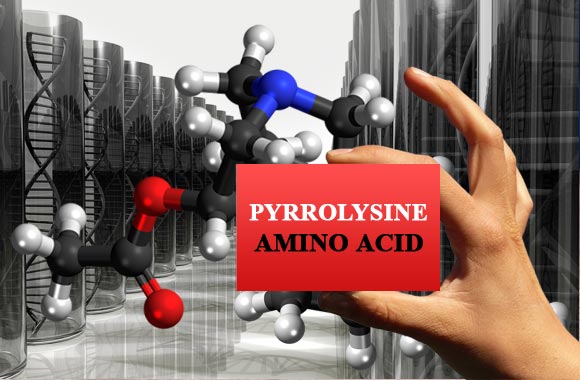
Pyrrolysine Amino Acid Benefits
Pyrrolysine is the largest amino acid known which is naturally occurring. It is encoded genetically by a nucleotide sequence that usually halts the translation of mRNA.
It is found in a bacterium and a few species of Archaea. It is just like the lysine but it is different in having a pyrrole ring that is attached to the one end of the lysine amino acid.
Biosynthesis
In our body, pyrrolysine is produced by special transfer RNA and an enzyme called aminoacyl transfer RNA. This amino acid also forms a part of the genetic code.
Functions
In our body, it is incorporated into active sites of many enzymes for example methyltransferase. Here this enzyme is rotated freely. It is incorporated during the process of translation into messenger RNA with the help of codon UAG. This amino acid has not been studied too much. There are not many known functions of it.
Structure
It contains three chiral centers which result in eight enantiomers, but only one of these is utilized. Pyrrolysine is a labile amino acid and it can easily be destroyed by heat and acid hydrolysis. This amino acid was also found to be involved in methanogenesis. Methane today is a greenhouse gas that is quite powerful. Pyrrolysine is the twenty-second amino acid of the proteinogenic type.
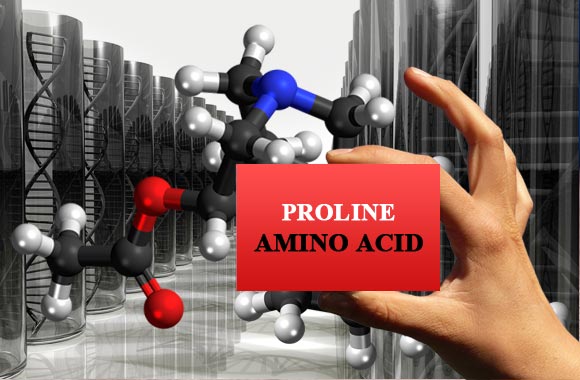
Proline Amino Acid Benefits
Proline is the non-essential amino acid with an aliphatic side chain. It is formed in our body from other amino acids. It is non-polar and hydrophobic. It has a secondary alpha-amino group. It has codons CCA, CCC, CCU, and CCG. Proline was obtained from casein in the year 1901. It is one of the amino acids which is soluble in alcohol. Proline exists in the form of cis configuration in the body. It also contains the pyrrole ring in it.
Sources
It is not so needed to be obtained from the food as it is itself formed within our body. But it is richly present in the meat.
Biosynthesis
Proline amino acid is formed from glutamate amino acid. The glutamate undergoes a cyclization and reduction reaction and generates the proline amino acid. Many enzymes take place in this reaction. These include the glutamate dehydrogenase enzyme, glutamate 5 kinases, pyrroline 5 carboxylate reductase, and the glutamate 1 kinase enzyme.
Physiological Role
Proline gives rise to glutamic acid which is an important amino acid. This glutamic acid then gives rise to very important compounds such as glutathione, glutamine, gamma-aminobutyric acid, alpha-ketoglutarate, etc.
Proline is also converted to hydroxyproline by a post-translation reaction that is after it has been incorporated into the protein molecule.
Hydroxyproline is an important component of collagen. So proline indirectly improves the texture of our skin. Collagen also has many functions. Since it allows the damaged cartilage to heel early and also it is important for the vertebra and joints as it cushions both.
Failure of collagen synthesis due to some genetic defects leads to many disorders, for example, the Ehlers-Danlos syndrome. Other diseases due to an abnormal structure of collagen include osteoarthritis and osteogenesis imperfect disease.
This hydroxyproline also gives rise to the formation of glyoxylic acid as well as the pyruvic acid in our body. The glyoxylic acid then forms oxalic acid and the pyruvic acid then gives rise to alanine amino acid.
Proline is interchangeable with ornithine, thus it can lead to the formation of urea as well. On the other hand, ornithine has also been found to form proline.
Proline is essential for the normal health of the tendons, joints, and muscles.
Proline is also utilized in making a number of beneficial drugs.
It has also seemed to maintain the normal health of our muscle tissues.
Thus, proline is also an important amino acid. Its supplements are also available in the market. These are especially important in those people who are suffering from diseases due to collagen deficiency and also in those suffering from skin disorders and injuries.
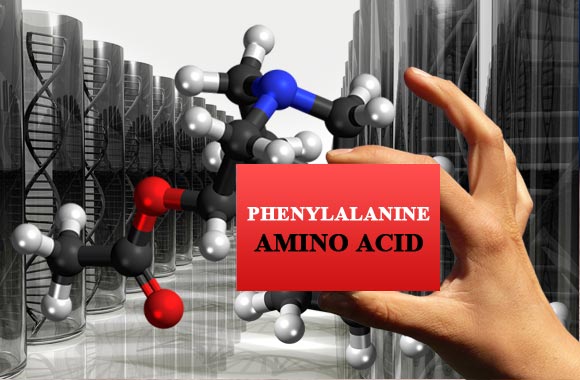
Phenylalanine Amino Acid Benefits
Phenylalanine is an amino acid with an aromatic side chain and is relatively polar. It is one of the essential amino acids which means it should be provided to the body by diet.
This amino acid also absorbs ultraviolet light and the strong absorbance of light by protein is at 280 nm. This property is used to detect and measure proteins. Its codons are UUU and UUC and are coded for by DNA as well. The codons are discovered by Heinrich Matthaei and Marshall Nirenberg in 1961. It has three forms: D-phenylalanine, L-phenylalanine, and DL-phenylalanine.
Sources
It is mostly found in protein-rich foods.
Animal sources: Fish, poultry, dairy foods, cheese, yogurt, beef, etc.
Plant sources: They contain avocado, almonds, lima beans, seeds peanuts, nuts, tofu, etc.
It is also present in the breast milk of some mammals.
Phenylalanine supplements are also available.
Functions
Phenylalanine gives rise to tyrosine which is one of the most important amino acids. This reaction is characterized by phenylalanine hydroxylase.
Tyrosine also gives rise to many different and essential products, for example, melanin, thyroid gland, neurotransmitters like aldosterone, or aldosterone, and dopamine. So it is also involved in the central nervous system.
This amino acid has been seen to improve Parkinsonism symptoms such as walking difficulties, rigidity, difficulties in speech, etc.
Phenylalanine crosses the blood-brain barrier and then interferes with the formation of serotonin.
D-phenylalanine plays an important role in the treatment and relief of chronic pains.
It has also been found useful in persons with vitiligo as it helps to strengthen the ultraviolet rays’ effect on them.
It may also be helpful in the case of depression as it gives rise to tyrosine which produces neurotransmitters essential for depression removal.
Catabolism
This amino acid is converted into many derivatives that are excreted in the urine. These are phenylacetic acid, phenyllactic acid, hydroxyphenylpyruvic acid, and hydroxyphenylacetic acid. However, this is the normal pathway of this amino acid and it becomes quantitively more important when phenylalanine does not undergo its major pathway which is its conversion to tyrosine.
Diseases
Phenylketonuria is the disease of an inborn error of amino acid metabolism. This disease is caused by a deficiency of phenylalanine hydroxylase. Symptoms of the central nervous system arise which include seizures, failure to walk and talk, microcephaly, hyperactivity, and failure to grow. Hypopigmentation also occurs in this disease.
Early diagnosis of phenylketonuria is important because it is possible to treat early through diet. Neonatal and antenatal screening is possible.
Treatment includes lifelong phenylalanine-restricted diets.
Maternal Phenylketonuria
When women suffering from this disease and not on a restricted diet become pregnant, their offspring are then affected with maternal phenylalanine syndrome. The high level of this amino acid causes mental retardation, microcephaly, and congenital heart diseases in the baby. So its level should be controlled before conception.
Phenylalanine thus is a very important amino acid. Nowadays it has been used to produce certain medicines and nutritional supplements synthetically.
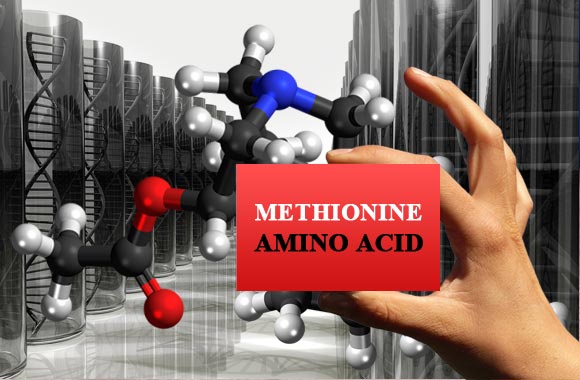
Methionine Amino Acid Benefits
Methionine is the uncharged polar amino acid. It is an essential amino acid as it is not synthesized in our body and must be provided through food. It is also a sulfur-containing amino acid. It was isolated from casein in 1922. It has a single codon which is AUG.
Sources
Methionine is derived from animal as well as plant sources.
Animal Sources: These include chicken meat, fish, dairy products, cheese, yogurt, eggs, etc.
Plant sources: These include lentils, garlic, onion, seed, beans, oats, cereals, wheat germs, corn, almonds, and rice.
Biosynthesis
Methionine being essential is not manufactured in our body. It is synthesized in the plants and some microorganisms from aspartic acid with the help of enzymes which are aspartokinase, homoserine O-transsuccinylase, homoserine dyhydrogenase, cystathine beta-lyase, homoserine dehydrogenase, methionine synthase, cystathione synthase, etc.
It is also regenerated by the reverse process from the homocysteine with the help of an enzyme, the methionine synthase.
Functions
Methionine gives rise to cysteine by converting into S-adenosyl methionine which further converts into adenosine and homocysteine by hydrolysis. Homocysteine then reacts with serine and results in the formation of cystathione which then finally forms cysteine.
Methionine plays role in maintaining our skin and nails free of problems
It is also important in the formation of carnitine, lecithin, taurine, phosphatidylcholine, and some phospholipids.
Methionine also plays an important role in the breakdown of fats. This results in the prevention of the accumulation of fats in the blood vessels. Thus in case of its deficiency in the body, it may dispose the arteries to arteriosclerosis.
It has also been found to act as an antioxidant as its sulfur group removes the free radicals which are harmful to our various organs.
It is also beneficial in preventing lethargy and sluggishness.
Methionine has been found useful in treating chronic diseases like arthritis, depression, and chronic liver diseases.
It increases the production of lecithin by the liver which helps to lower the cholesterol level in the body.
It has also been found in assisting our digestive system where it acts as a chelating agent for heavy metals and results in their removal from the body.
Methionine along with other amino acids also forms creatine which is an important constituent of the muscles and provides them strength.
If it’s not taken in a proper amount, its deficiency may lead to skin problems. The common problems are dermatitis, fatigue, slow growth, fatty liver, or edema.
People suffering from pancreatitis, liver diseases, or Parkinsonism may get benefits from methionine amino acids.
It is also found to promote estrogen hormone, therefore women taking contraceptive pills can use it as well.
Thus, a good intake of methionine amino acids keeps you healthy and active.
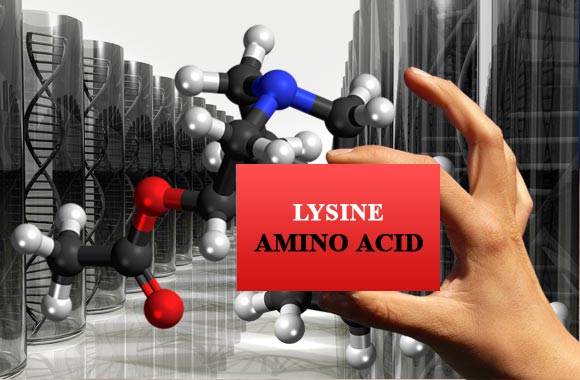
Lysine Amino Acid Benefits
Lysine is the amino acid with the basic side chain. It is an essential amino acid as it is not manufactured in our body so it needs to be supplied from the diet to our body. It was first obtained from casein in 1889. It has AAA and AAG codons. It is a strong base with a positive charge and is ketogenic.
Sources
It is present in a wide variety of foods.
Animal Source: The animal sources of lysine are chicken, beef, milk, catfish, eggs, cheese, etc.
Plant sources: Some of the plant sources are pulses, chickpea, kidney beans, yeasts, lentils, soybeans, potatoes, navy beans, etc.
Synthesis
Lysine is not synthesized in our bodies. In plants, it is synthesized from aspartate with the help of different enzymes. These are aspartokinase, Diaminopimelate epimerase, succinyl diaminopimelate aminotransferases, diaminopimelate decarboxylase, succinyl diaminopimelate desuccinylase, etc.
Physiological Functions
Being ketogenic gives rise to acetyl CoA which is an important constituent of the citric acid cycle. It also produces hydrolysine by post-translational modification. Hydrolysine is an important part of collagen and provides stability for collagen crosslinks.
Lysine via its effects on serotonin receptors present in the gastrointestinal tract has an anxiolytic action. These serotonin receptors lead to anxiety-induced disorders due to their hyperstimulation in the intestinal tract but lysine acts to reduce their stimulatory effect. It has also been found essential in the growth and development of bones, especially in children.
It is also utilized in our body for producing antibodies, enzymes, hormones, and collagen. It also plays role in wound healing and repair. It maintains the nitrogen balance in the body. It increases muscle mass and is therefore good food for those who are recovering from some injuries or any surgery. It maintains the health of blood vessels.
Lysine has been found a wonderful weapon in combating infections as well as in reducing their outbreaks. It is found to be good for simplex herpes viral infection and cold sores as it helps in healing the infections early and quickly. It also reduces the absorption of arginine amino acid since arginine is thought to be utilized by the herpes virus for its replication. Lysine supplements are also in use for this reason as they are thought to prevent the eruptions of shingles which are caused by the varicella-zoster virus when the body’s immunity is low.
If people are not taking a proper diet or diet less lysine, there are possibilities that they can face such problems as hair loss, inability to concentrate well, bloodshot eyes, growth retardation, problems in reproductive systems, irritability, weight loss, and all the time feeling of fatigue and lethargy.
One of the important physiological roles of this amino acid is that it increases calcium absorption and decreases its excretion through urine. So this thing indirectly increases the strength of bones and prevents them from bone fractures.
Lysine is also used in many animal feeds. Lysine supplements are available in the form of capsules, tablets, liquids, and creams. These should be taken into the care of, especially for people who are suffering from liver and kidney diseases.
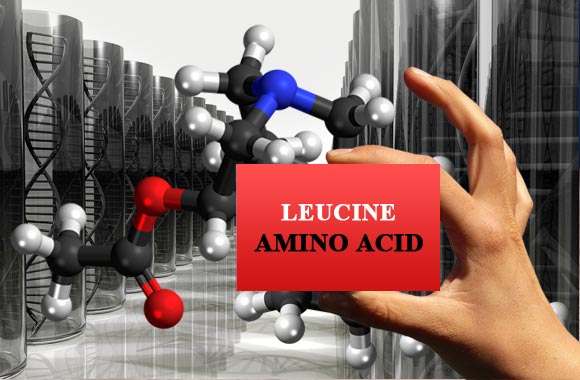
Leucine Amino Acid Benefits
Leucine is the branched-chain amino acid with a non-polar aliphatic side chain. It is an essential amino acid as it cannot be synthesized by the body. So it must be obtained from the foods or diets. It has UUG, UUA, CUC, CUU, and CUG codons. Leucine is a ketogenic amino acid.
Sources
It is found in foods containing proteins. Its sources are:
Animal sources: Meat, chicken, poultry, fish, seafood, dairy products like cottage cheese, etc.
Plant sources: Whole lentils, brown rice, nuts, soy flour, whole wheat, beans, sesame seeds, peanuts, etc.
Biosynthesis
Since leucine is not formed in our body but it is synthesized in plants and some microorganisms. In them, it is formed from pyruvate by using the following enzymes namely, acetolactate synthetase, dihydroxy acid dehydratase, acetohydroxy acid isomeroreductase, isopropyl malate isomerase, and synthase along with leucine aminotransferase.
In the human body, it is a major component of buffer proteins, austacin, and ferritin.
Physiological Functions
Leucine is an exclusively ketogenic amino acid as it gives rise to ketoacyl CoA which is converted into acyl CoA derivatives which include HMG-CoA. This HMG-CoA is important as it takes part in the synthesis of cholesterol. It can also be broken down into acetoacetic acid and acetyl CoA.
Leucine is essential in regulating blood glucose levels as well as in the growth and repair of bones, skin, and muscles.
It stimulates the synthesis of muscle proteins.
It also results in the production of growth hormones and it also burns visceral fats which are located in the deeper layers of the body and are least responsive to dieting and exercise.
Leucine also prevents the breakdown of muscle proteins which occurs during trauma, the stress of severe kind, starvation, or recovery from surgery.
It is also useful for early wound healing.
Patients suffering from phenylketonuria can take leucine which has been found beneficial to them.
Diseases
An excess intake of leucine results in the development of pellagra which is characterized by 3 D’s namely, Dermatitis, diarrhea, and death.
Its high intake has also been found to damage the liver and kidney functions as a result of increased production of ammonia.
A disease known as branched-chain ketoaciduria or maple syrup urine disease has been found due to the failure of metabolism of three amino acids which are leucine, isoleucine, and valine. The failure occurs due to the deficiency of an enzyme branched-chain keto acid dehydrogenase that is responsible for the decarboxylation of these three amino acids. This disease is characterized by dehydration, vomiting, feeding problems in the baby, and metabolic acidosis. There is a characteristic maple syrup odor in the urine, hence named maple syrup urine disease. If it is not treated, it will lead to mental retardation, physical disability, and even death.
In a nutshell, leucine is an important amino acid. It is also available in the form of supplements in the market. These supplements can be taken with valine and isoleucine for better results.
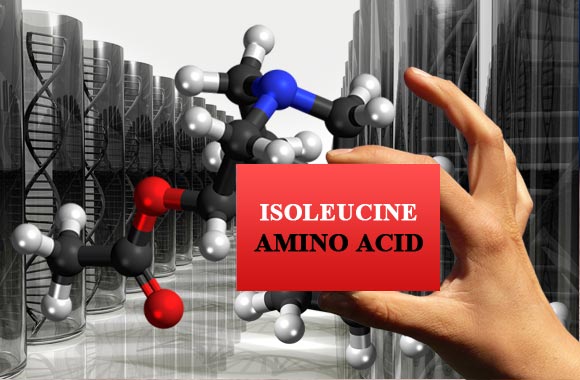
Isoleucine Amino Acid Benefits
Isoleucine is an essential amino acid so it needs to be provided by the food to our body. It has an aliphatic side chain and is non-polar. It is also hydrophobic. It has AUU, AUA, and AUC codons. Isoleucine along with threonine has a chiral side chain. There are four stereoisomers of isoleucine along with two diastereomers. It is glucogenic as well as a ketogenic amino acid.
Sources
It is found in the following sources;
Animal Sources: Some of the isoleucine animal sources are meats, chicken, fish, turkey, lamb, egg, dairy products, cheese, etc
Plant Sources: Some of the plant sources are soy protein, nuts, whole lentils, seaweed, peanuts, etc.
Synthesis
Isoleucine is not synthesized in our bodies. It must be ingested from foods. In a plant, it is synthesized from the pyruvate and alpha-ketoglutarate with the help of enzymes namely, dihydroxy-acid dehydratase, acetolactate synthase, valine aminotransferase, and acetohydroxy acid isomeroreductase.
Physiological Functions
Isoleucine undergoes transamination and forms alpha-keto acid which is then converted into acetyl-CoA derivatives and which then gives rise to propionyl-CoA and acetyl-CoA. The propionly-CoA is converted to L-methylmalonyl-CoA and which then forms succinyl-CoA. These play role in the citric acid cycle then.
Isoleucine has the ability to increase strength and also heel and repair muscle tissues.
It also promotes healing by clotting at the site of injury.
It also prevents muscle proteins break down when exercising.
Isoleucine produces many compounds in our bodies that provide energy to us.
Isoleucine is also needed in children for their growth.
It also stabilizes and regulates blood sugar levels. This occurs as isoleucine is converted into glucose in the liver which then enters the blood.
Isoleucine deficiency produces symptoms that are just like hypoglycemic symptoms for example in its deficiency a person may experience confusion, irritability, fatigue, depression, dizziness, headaches, etc.
Isoleucine’s genetically altered metabolism leads to a disease called maple syrup urine disease. So these patients should avoid isoleucine supplements.
Isoleucine is also available in supplements and these supplements are helpful in the prevention of muscle wasting and promotion of tissue repair after surgery or trauma. These also increase muscle mass.

Histidine Amino Acid Benefits
Histidine is a glucogenic amino acid with a basic side chain. It is a weak base. After being incorporated into a protein molecule, histidine may show either positively charged or negatively charges side chains which are determined by the ionic environment provided by the proteins. Histidine is an essential amino acid that needs to be provided by the food to our body. It is present in the DNA. It is a proteinogenic amino acid. Histidine contains an imidazole functional group which makes it a participant in an enzyme-catalyzed reaction.
Sources
Following are the histidine sources:
Animal sources: Meat, poultry, eggs, fish, dairy products like milk, cheese, etc
Plant sources: Rice, rye, and wheat are some of the plant sources of histidine amino acids.
Synthesis
It is produced in the body as a result of a breakdown of muscle protein. Histamine is also released by chemical and mechanical stimuli in our bodily. Some of the drugs also result in the release of histamine. It is also released by tissue injury and burns.
Physiological Role
Histidine is the precursor of a very important amine called “histamine” which is formed by its decarboxylation in the presence of the enzyme histidine decarboxylase. In the body, histamine performs many functions. Histamine has four receptors in the body. These are H1, H2, H3, and H4. Some of its functions are as follows:
- Histamine is released during immune reactions and it brings about type 1 allergic reactions.
- In the lungs, histamine causes bronchoconstriction to a slight extent in normal people but markedly in asthmatic patients.
- Its release leads to vasodilation of arterioles and pre-capillary sphincters, these results in decreased peripheral resistance and therefore severe fall of both systolic and diastolic blood pressure.
- It also causes increased permeability of vessels and this leads to urticaria and laryngeal edema.
- Histamine acts directly on the cardiac pacemaker and this causes an increase in heart rate. An increase in heart rate also occurs due to the reflex response of hypotension.
- In the gastrointestinal tract histamine causes intense stimulation of gastric hydrochloric acid secretion through H2 receptors
- Histamine administration in pregnant women results in uterine contraction.
- Smooth muscle of the gastrointestinal tract also undergoes contractions after histamine administration.
- Histamine also plays an important role in our central nervous system. It plays a role as a neurotransmitter and neuromodulator.
The histaminergic neurons are present in the posterior hypothalamus whose axons project to all areas of the brain. These neurons seem to play role in pain threshold, arousal, sexual behavior, blood pressure, and regulation of drinking. It has been seen that they also play role in the regulation of secretion of several anterior pituitary hormones.
Histidine is important for the growth and repair of the tissues and also in maintaining myelin sheath function. Histidine also plays role in the synthesis of both red blood cells and white blood cells. Histidine is very important in infants and its deficiency in them leads to eczema which is a form of dermatitis.
Histidine supplements are also available in the market these days.
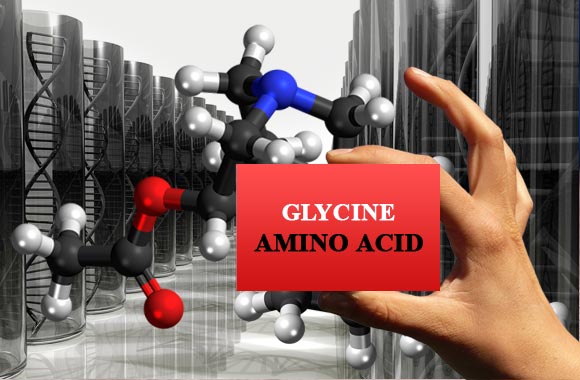
Glycine Amino Acid Benefits
Glycine amino acid is a non-essential amino acid as it is synthesized in our body mainly in the liver from other amino acids. It is non-polar and has an aliphatic side chain. Glycine is hydrophobic and tends to cluster together with other hydrophobic amino acids. It is the smallest amino acid found in proteins and DNA. It has the following codons, namely GGC, GGG, GGU, and GGA. Glycine was first isolated from gelatin in the year of 1820. This amino acid is sweet in taste and colorless.
Sources
Glycine is mainly found in protein-rich food.
Animal sources: Fish, dairy foods, meat, cheese, etc
Plant sources: beans, soybean, etc
It is also found in large amounts of silk fibroin. In our body, it is present in the skin, muscles, and collagen.
Synthesis
In our body glycine is synthesized from serine which is also an amino acid. Serine gives rise to glycine by the reversal of serine hydroxymethyltransferase reaction.
Physiological Functions
Glycine is the part of glutathione which is a coenzyme involved in many biochemical reactions. The important function of glutathione is that it helps in the maintenance of cell integrity by protecting the SH group of hemoglobin, catalase, and lipoproteins of the cell membrane. So glycine has an important antioxidant action.
It takes part in the manufacturing of purine, heme, and creatine.
It conjugates with benzoic acid in the liver and forms hippuric acid which is then excreted in the urine; this is called a detoxicating reaction. It also conjugates with many other drugs and their derivatives that contain the carboxyl group which makes them water-soluble and excretable in the urine.
Glycine can also be converted to serine by the addition of a hydroxymethyl group and this reaction is catalyzed by an enzyme called serine hydroxymethyl transferases which further requires the coenzymes to carry out the reaction.
Glycine also has an ability to conjugate with cholic acid and chenodexoycholic acid, both of which are primary bile salts.
It also plays a role in the absorption of calcium in the body.
Glycine amino acid can be oxidized to glyoxylic acid catalyzed by an enzyme glycine oxidase. Glyoxylic acid undergoes further oxidation to form formic acid and oxalic acid. Formic acid takes part in one-carbon metabolism while oxalic acid is excreted in the urine.
The most important role of glycine is in the central nervous system where it acts as a neurotransmitter inhibitory in nature.
Glycine cleavage enzyme which is also called glycine synthase cleaves glycine to carbon dioxide ammonia and methylene group oxidatively. The methylene group then takes part in one-carbon metabolism.
This amino acid is also found to be produced in the prostate fluid present in males so it is considered to be important for prostate normal functioning.
It also enables our body to repair damaged tissues.
Glycine is glucogenic so it also provides glucose which is necessary for energy.
Thus, glycine plays many vital roles. It is now available in dietary supplements as well which are found helpful in the treatment of fatigue and lethargy.
Reference Sources
- Glutamine. Natural Medicines Comprehensive Database Professional Version. Published by WebMD on https://www.webmd.com/vitamins/ai/ingredientmono-878/glutamine
- Albrecht J, Sidoryk-Węgrzynowicz M, Zielińska M, Aschner M., Roles of glutamine in neurotransmission. Neuron Glia Biol. 2010 Nov; 6(4):263-76. doi: 10.1017/S1740925X11000093. Epub 2011 Oct 21. PMID 22018046.
- PubChem [Internet]. Bethesda (MD): National Library of Medicine (US), National Center for Biotechnology Information; 2004-. PubChem Compound Summary for CID 5950, Alanine; [cited 2022 Feb. 28]. Available from: https://pubchem.ncbi.nlm.nih.gov/compound/Alanine
- P Stehle, N Mertes, CH Puchstein, J Zander, S Albers, P Lawin, Fürst P., Effect of parenteral glutamine peptide supplements on muscle glutamine loss and nitrogen balance after major surgery. Volume 333, ISSUE 8632, P231-233, February 04, 1989, Published:February 04, 1989 DOI: https://doi.org/10.1016/S0140-6736(89)91254-3
- PubChem [Internet]. Bethesda (MD): National Library of Medicine (US), National Center for Biotechnology Information; 2004-. PubChem Compound Summary for CID 145742, Proline; [cited 2022 Feb. 28]. Available from: https://pubchem.ncbi.nlm.nih.gov/compound/Proline
- Phenylalanine. Natural Medicines Comprehensive Database Professional Version. Published by WebMD on https://www.webmd.com/vitamins/ai/ingredientmono-653/phenylalanine
- PubChem [Internet]. Bethesda (MD): National Library of Medicine (US), National Center for Biotechnology Information; 2004-. PubChem Compound Summary for CID 5862, Cysteine; [cited 2022 Feb. 28]. Available from: https://pubchem.ncbi.nlm.nih.gov/compound/Cysteine
- National Center for Biotechnology Information. PubChem Database. Phenylalanine, CID=6140, https://pubchem.ncbi.nlm.nih.gov/compound/Phenylalanine (accessed on Apr. 18, 2020)
- Mailoo VJ, Rampes S. Lysine for Herpes Simplex Prophylaxis: A Review of the Evidence. Integr Med (Encinitas). 2017 Jun;16(3):42-46. PMID: 30881246; PMCID: PMC6419779.
- Avila A, Nguyen L, Rigo JM. Glycine receptors and brain development. Front Cell Neurosci. 2013 Oct 21;7:184. doi: 10.3389/fncel.2013.00184. PMID: 24155690; PMCID: PMC3800850.
- Purves D, Augustine GJ, Fitzpatrick D, et al., editors. Neuroscience. 2nd edition. Sunderland (MA): Sinauer Associates; 2001. GABA and Glycine. Available from: https://www.ncbi.nlm.nih.gov/books/NBK11084/
- PubChem [Internet]. Bethesda (MD): National Library of Medicine (US), National Center for Biotechnology Information; 2004-. PubChem Compound Summary for CID 6287, Valine; [cited 2022 Feb. 28]. Available from: https://pubchem.ncbi.nlm.nih.gov/compound/Valine
- PubChem [Internet]. Bethesda (MD): National Library of Medicine (US), National Center for Biotechnology Information; 2004-. PubChem Compound Summary for CID 6137, Methionine; [cited 2022 Feb. 28]. Available from: https://pubchem.ncbi.nlm.nih.gov/compound/Methionine
- PubChem [Internet]. Bethesda (MD): National Library of Medicine (US), National Center for Biotechnology Information; 2004-. PubChem Compound Summary for CID 6306, l-Isoleucine; [cited 2022 Feb. 28]. Available from: https://pubchem.ncbi.nlm.nih.gov/compound/l-Isoleucine
- PubChem [Internet]. Bethesda (MD): National Library of Medicine (US), National Center for Biotechnology Information; 2004-. PubChem Compound Summary for CID 6274, Histidine; [cited 2022 Feb. 28]. Available from: https://pubchem.ncbi.nlm.nih.gov/compound/Histidine
- Lysine. Natural Medicines Comprehensive Database Professional Version. Published by WebMD on https://www.webmd.com/vitamins/ai/ingredientmono-237/lysine
- PubChem [Internet]. Bethesda (MD): National Library of Medicine (US), National Center for Biotechnology Information; 2004-. PubChem Compound Summary for CID 6106, Leucine; [cited 2022 Feb. 28]. Available from: https://pubchem.ncbi.nlm.nih.gov/compound/Leucine
- PubChem [Internet]. Bethesda (MD): National Library of Medicine (US), National Center for Biotechnology Information; 2004-. PubChem Compound Summary for CID 6305, Tryptophan; [cited 2022 Feb. 28]. Available from: https://pubchem.ncbi.nlm.nih.gov/compound/Tryptophan
- Glycine. Natural Medicines Comprehensive Database Professional Version. Published by WebMD on https://www.webmd.com/vitamins/ai/ingredientmono-1072/glycine
- PubChem [Internet]. Bethesda (MD): National Library of Medicine (US), National Center for Biotechnology Information; 2004-. PubChem Compound Summary for CID 5951, Serine; [cited 2022 Feb. 28]. Available from: https://pubchem.ncbi.nlm.nih.gov/compound/Serine
- National Center for Biotechnology Information (2022). PubChem Compound Summary for CID 6322, Arginine. Retrieved February 28, 2022 from https://pubchem.ncbi.nlm.nih.gov/compound/Arginine.
- PubChem [Internet]. Bethesda (MD): National Library of Medicine (US), National Center for Biotechnology Information; 2004-. PubChem Compound Summary for CID 6326983, Selenocysteine; [cited 2022 Feb. 28]. Available from: https://pubchem.ncbi.nlm.nih.gov/compound/Selenocysteine
- National Center for Biotechnology Information. PubChem Compound Summary for CID 6267, Asparagine. https://pubchem.ncbi.nlm.nih.gov/compound/Asparagine. Accessed Feb. 28, 2022.
- PubChem [Internet]. Bethesda (MD): National Library of Medicine (US), National Center for Biotechnology Information; 2004-. PubChem Compound Summary for CID 5460671, Pyrrolysine; [cited 2022 Feb. 28]. Available from: https://pubchem.ncbi.nlm.nih.gov/compound/Pyrrolysine
- PubChem [Internet]. Bethesda (MD): National Library of Medicine (US), National Center for Biotechnology Information; 2004-. PubChem Compound Summary for CID 6057, Tyrosine; [cited 2022 Feb. 28]. Available from: https://pubchem.ncbi.nlm.nih.gov/compound/Tyrosine
- National Center for Biotechnology Information. “PubChem Compound Summary for CID 5960, Aspartic acid” PubChem, https://pubchem.ncbi.nlm.nih.gov/compound/Aspartic-acid. Accessed 28 February, 2022.
- PubChem [Internet]. Bethesda (MD): National Library of Medicine (US), National Center for Biotechnology Information; 2004-. PubChem Compound Summary for CID 33032, Glutamic acid; [cited 2022 Feb. 28]. Available from: https://pubchem.ncbi.nlm.nih.gov/compound/Glutamic-acid




